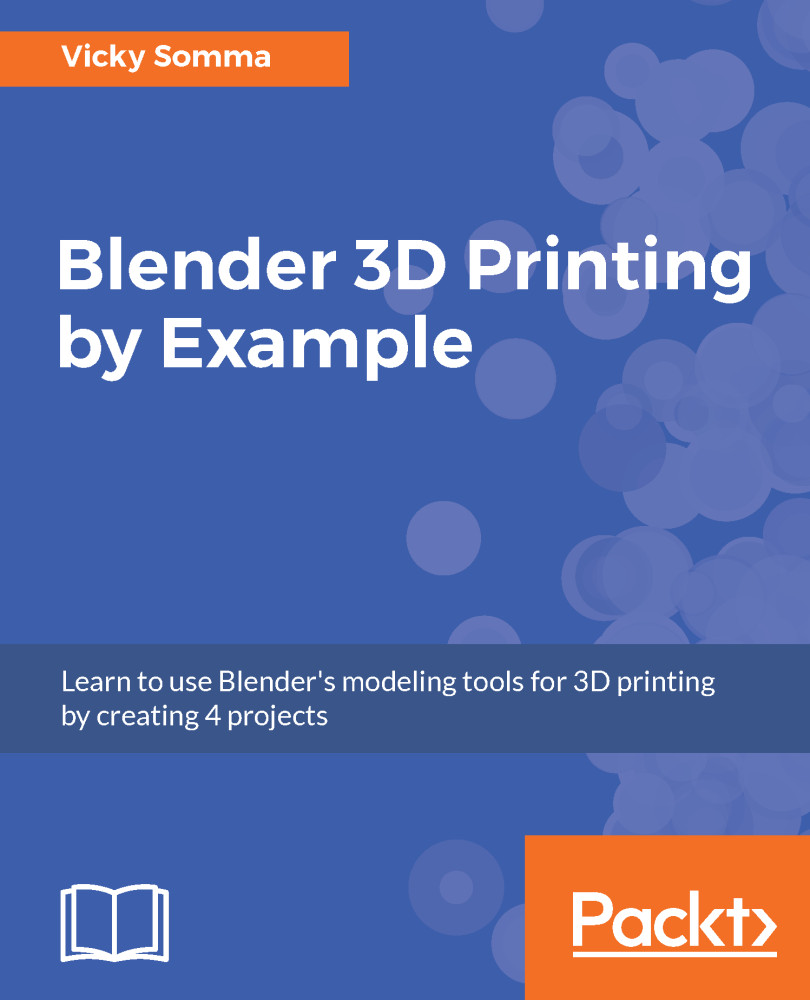Thinking about size
Once you have an idea of which printing process will be used, I recommend thinking about the final size of your piece. We've put some thought into how high we want to emboss detailing as well as our wall thicknesses. If we made our entire model without thinking of the final dimensions, we would have to resize everything accordingly at the end.
If I scaled my piece down, suddenly I may have walls that are too thin to pass the automated checks at one of the 3D Printing Service Bureaus. Or perhaps I scaled my final piece up, making all my vertical detailing too large for an FFF/FDM printer to make without adding extra supports. You always have the ability to edit your model and there is indeed a natural iterative process to design. However, mass changing dimensions can be tedious and time consuming, possibly demoralizing. It is well worth a few moments to get out a tape measure or calipers and reflect on sizing.
Sizing for the printer
Regardless of the type of printer being used, it will have some size limitations. With the home FFF/FDM or SLA printers, you may be mainly concerned about the size of your print bed. With the 3D Printing Service Bureaus, economic forces may have you more concerned by cost. Some 3D Printing Service Bureaus will also have a minimum size requirement as well. If you do wish to push the limits in either direction, the technical specifications of the printer or the Material Design Requirements will guide you accordingly.
Note
Design too big?
If your design is too big, don’t abandon it just yet. First off, if it is slightly too big for your print bed, remember that the hypotenuse of a triangle is longer than the other sides. See if placing your object at a diagonal will give you the room you need. Your print bed may only be 200mm x 200mm, but the diagonal could accommodate almost 283mm. If all else fails, you can split your model into parts to be printed separately.
Sizing for function
The function of what you are designing could go a long way to determining the size. This is particularly true if you are combining your print with another part. If I had a lobster claw clasp I wanted to use with a custom designed pendant, I would want to make sure the hook for that pendant was wide enough for the clasp. Once that is decided, aesthetics may kick in. I may size the rest of the piece purely to look proportionate with the hook.
Existing objects also give good direction with sizing. Making a coaster? Measure a coaster you already have. Holiday ornaments, paperweights, bottle openers, magnets, soap dishes, earrings, bookmarks, and business card holders are just the tip of the iceberg. Your house and your office are full of reference objects to guide you with sizing.
Sizing for yourself
Finally, when designing jewelry or accessories, it makes sense to take the tape measure to yourself. Get a feel for what would look good on you and what would look too clunky. Use your own dimensions to guide the dimensions of your 3D model.
Note
You don't have to measure everythingSometimes online references can help you with jewelry and accessory sizing. For example, if you are making a ring and know the ring size, there are conversion charts to translate the ring size to the inner diameter in millimeters.




































































